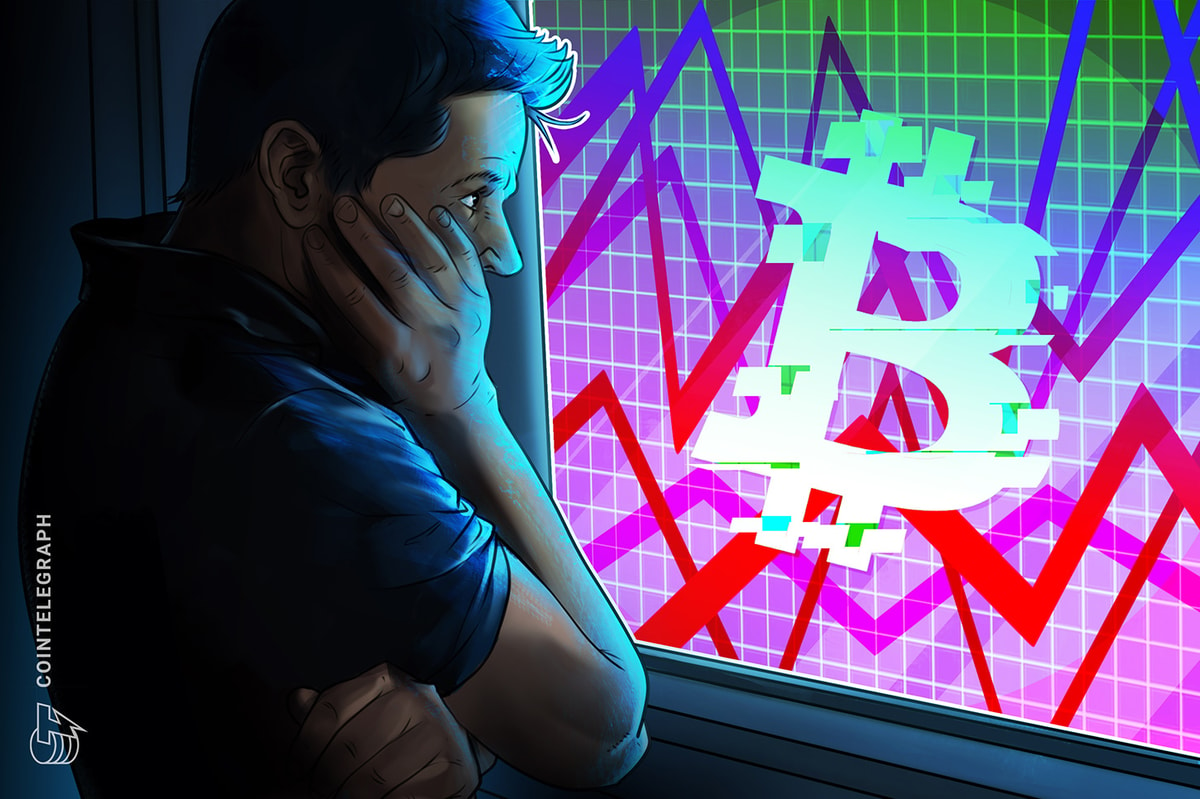Bitcoin forks BCH, BSV and XEC soared last month, but are the gains organic and sustainable?
5 min read
The start of June saw negative price action across the cryptocurrency market after the U.S. Securities and Exchange Commission (SEC) brought fresh lawsuits against the world’s largest exchanges, Binance and Coinbase.
However, the sentiment quickly turned bullish after a crucial exchange-traded fund (ETF) proposal was filed by the world’s largest asset management firm, BlackRock, on June 16. A wave of ETF fillings and institutional trading interest in digital assets followed BlackRock’s ETF filling.
The launch of EDX Markets — backed by Wall Street giants Fidelity Investments, Citadel Securities and Charles Schwab — on June 20 fueled a particular sector of the market, that being Bitcoin forks like Bitcoin Cash (BCH) and Bitcoin SV (BSV) and other proof-of-work (PoW) cryptocurrencies like Kaspa (KAS).
The exchange debuted with Bitcoin (BTC), Ether (ETH), Litecoin (LTC) and BCH. The inclusion of BCH catalyzed an uptrend across other Bitcoin forks.
Among the top gainers in June, three Bitcoin forks populated the list, followed by Kaspa and FLEX Coin (FLEX). FLEX benefited from its integration with Open Exchange (OPNX), which is backed by the co-founders of the bankrupt Three Arrows Capital fund.
In comparison, Bitcoin’s monthly gains stood at 11.94%, as it traded above the $30,000 level for the first time since April 2023.
FLEX Coin (FLEX) receives short-term boost from link with 3AC co-founders
FLEX announced a transition to OPNX, a bankruptcy claims exchange, in May 2023. The token’s price reached a 13-month high of $4.37 on June 27.
OPNX is backed by the co-founders of now-bankrupt venture fund Three Arrows Capital. Reportedly, the co-founders face $1.3 billion in liability for actions that exacerbated the losses of the fund.
Still, the duo continued to endorse OPNX under a new venture fund, using the same branding as their previous fund.
FLEX was approved for a restructuring of its exchange by the Seychelles courts on March 6. Its integration with Open Exchange imparts utility to the FLEX token in OPNX to settle claims and earn staking rewards.
Notably, as the FLEX price surged to 2022 peak levels, the trading volumes remained subdued at around 0.01% of the $1 billion daily volume it was generating at its peak, which raises a red flag.
It represents a case of significant volatility in illiquid assets. Due to limited liquidity, traders can more easily push up the price of these coins compared to larger, more liquid assets.
Technically, the 2022 breakdown level of around $5.08 and all-time-high level of $7.56 will act as resistance levels to the upside. The token faces 80% downside risk to $0.75, which represents the accumulation level in May 2023.
Bitcoin Cash (BCH) riding the EDX Markets uptrend
BCH’s price more than doubled in June following its listing on EDX Markets. BCH was one of the four cryptocurrencies that debuted on the platform alongside BTC, ETH, and LTC.
While the EDX listing acted as a positive catalyst, negative funding across perpetual swap markets and potential market manipulation on South Korean exchange Upbit are also the primary drivers of the recent uptrend.
The token’s price witnessed a combined liquidation of $21 million in June, according to an update from crypto analytics outlet The TIE. The levels are significantly higher than usual, when the “daily liquidations total tens of thousands of dollars, if anything.”
The total fees paid on the Bitcoin Cash blockchain have ranged lower than $200 since the start of the year, indicating that the blockchain’s usage has been limited.
In comparison, Litecoin, which provides a similar utility, generates around 10 times larger revenue for the miners in fees than BCH. The poor fundamentals and high liquidation levels raise a red flag on the sustainability of the recent gains.
BSV rides the BCH wave despite poor fundamentals
BCH and BSV have a strong correlation of 0.78, which appears to be the reason why BSV enjoyed 31.4% gains in June.
BSV has been in a consistent downtrend since 2022, as interest in the blockchain faded after the crypto bull market and its trading volumes dried up.
The coin made an all-time low of $21.43 on June 10 before catching the BCH bullish tide and staging an up move.
Its poor performance drove miners away from its ecosystem, making a 51% attack relatively cheaper on Bitcoin SV — a one-hour attack requiring less than $2,000 compared to $1.4 million for Bitcoin, which makes Bitcoin SV vulnerable.
Related: ‘Bitcoin Jesus’ says Ethereum is the front-runner for global crypto adoption
Kaspa (KAS) benefits from improved performance and low liquidity
Kaspa is a PoW consensus-based blockchain network similar to Bitcoin and Litecoin.
Kaspa offers a high throughput of one block per second compared to one block per 10 minutes for Bitcoin. Kaspa Labs, the team building the blockchain, also hinted at the launch of a public testnet that will enhance its scalability 10,000 times, which appears to be fueling its market sentiments.
However, the token is primarily traded on unregulated exchanges with low trading volumes and low trust scores, according to CoinGecko. This makes the cryptocurrency susceptible to high volatility and manipulation.
Technically, if the bullish momentum continues, KAS will look to retest 2023 highs of around $0.40. On the downside, the token faces the risk of a correction toward the yearly lows of around $0.15.
While the token exhibits illiquid market signs, making it susceptible to volatility, and faces tough competition from large PoW networks like Bitcoin and Litecoin, its one-year price action has been positive, with higher highs and higher lows.
eCash (XEC) joins BSV and BCH in a Bitcoin fork-rally
Cryptocurrency eCash (XEC) is a rebranded version of a tertiary Bitcoin fork, Bitcoin Cash ABC, which was another fork of Bitcoin Cash, like Bitcoin SV.
Similar to BCH and BSV, XEC also rode the positive tide that lifted all boats in the BTC fork category.
Similar to Bitcoin SV, eCash lacks fundamental value and exhibits volatility due to illiquid market conditions. The token is listed on a few top exchanges like Binance and Bithumb. However, it has yet to be supported on any United States-based exchange, which raises a red flag.
The rise of tokens with low liquidity and loosely based narratives suggest that there could be some price manipulation in these tokens that is influencing their short-term price. The long-term value proposition of Bitcoin forks remains questionable, with low utility and security.
Moreover, the cryptocurrency market is still suffering from the adverse impacts of the SEC’s cases. The tokens regarded as securities, such as Cardano (ADA), Polygon (MATIC) and Flow (FLOW), all posted more than a 20% loss over the month.
As the markets struggle with legal challenges, building bullish narratives has been difficult. Given that Bitcoin is leading the market, its price action will be crucial in determining the direction of altcoins.
This article does not contain investment advice or recommendations. Every investment and trading move involves risk, and readers should conduct their own research when making a decision.
This article is for general information purposes and is not intended to be and should not be taken as legal or investment advice. The views, thoughts, and opinions expressed here are the author’s alone and do not necessarily reflect or represent the views and opinions of Cointelegraph.





